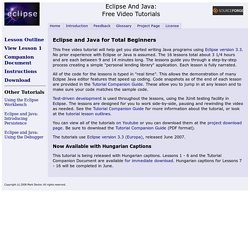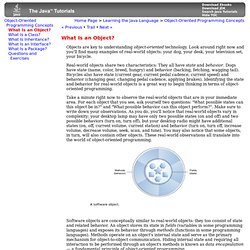

Online. Reference. Netbeans. Dtr1211. Todo. Introduktion. Sound. Jme3 – jME Wiki. Are you a Java developer who wants to develop 3D games? Create a jME3-based Java project: Using the jMonkeyEngine SDK , simply create a new BasicGame Project. (Recommended) Using any other IDE: Create a standard Java SE project. Place all JARs from jME3's lib directory on the Classpath. in the jMonkeyEngine SDK to browse and search a copy of this wiki's contents while coding. The beginner tutorials demonstrate the most common use cases and explain basic concepts. Hello Node – Transforming Geometries and Nodes in the Scenegraph Hello Assets – Loading 3-D models, scenes, and other assets. Hello Loop – Triggering actions in the update loop Hello Picking – Shooting, pressing buttons, selecting, picking up items Hello Audio – Accompanying places and actions with 3D sound Hello Effects – Creating particle effects such as fire, explosions, spells.
See also: Trouble running the samples ? Now that you understood the basics, let's put it all together. Learn from sample code in src/test and src/games ! Eclipse and Java for Total Beginners. This free video tutorial will help get you started writing Java programs using Eclipse version 3.3.

No prior experience with Eclipse or Java is assumed. The 16 lessons total about 3 1/4 hours and are each between 9 and 14 minutes long. The lessons guide you through a step-by-step process creating a simple "personal lending library" application. Each lesson is fully narrated. All of the code for the lessons is typed in "real time". Test-driven development is used throughout the lessons, using the JUnit testing facility in Eclipse. You can view all of the tutorials on Youtube or you can download them at the project download page. The tutorials use Eclipse version 3.3 (Europa), released June 2007. This tutorial is being released with Hungarian captions. Copyright (c) 2008 Mark Dexter. What Is an Object? (The Java™ Tutorials > Learning the Java Language > Object-Oriented Programming Concepts)
Objects are key to understanding object-oriented technology.

Look around right now and you'll find many examples of real-world objects: your dog, your desk, your television set, your bicycle. Real-world objects share two characteristics: They all have state and behavior. Dogs have state (name, color, breed, hungry) and behavior (barking, fetching, wagging tail). Bicycles also have state (current gear, current pedal cadence, current speed) and behavior (changing gear, changing pedal cadence, applying brakes). Identifying the state and behavior for real-world objects is a great way to begin thinking in terms of object-oriented programming. Take a minute right now to observe the real-world objects that are in your immediate area. A software object. Software objects are conceptually similar to real-world objects: they too consist of state and related behavior. Consider a bicycle, for example: Writing a hash function in Java: guide to implementing hashCode() Home Collections intro Lists Maps Sets Which collection class?

Sorting Hashing Advanced Video lecture: hash tables.